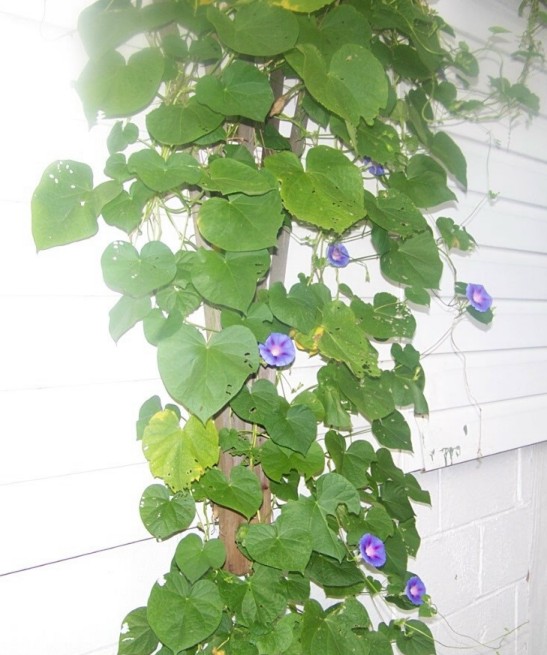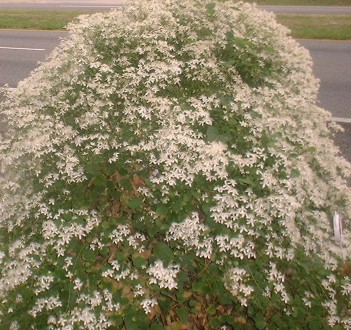|
Gardens Ablaze |
||
|
|
Vines and
Climbers
|
Personalized Engraved Garden Stones Custom engraved stones and rocks at SerenityHealth. Many sizes and fonts to choose from. |
|
Detailed Vine Profiles Site Map
Home |
Climbers are also ideal for those with only small spaces for plants. They can be grown vertically to give the impression of a luxurious retreat when planted in pots or along ground-floor balconies. There are several basic types of climbers, and the supports you use for them vary according to what plant you have chosen. Winders: Many of the climbing plants belong to this group, including the popular morning glories and honeysuckle. The winding plants always grow around their supports in one direction, most of them growing counter-clockwise. Appropriate supports for these plants are wires, sticks, and strings. Care should be taken to give the plant a support that is small enough to wind around tightly, or the plant will come down in high winds. Tendrils: This group includes sweet pea and Virginia creeper, to name two. They climb by using long leaf stalks, suckers, or adhesive pads at the tops of the shoots. Appropriate supports include nets or grid-shaped wood, wire or twine. Again, the grid should be made of material that is small enough for the plant to get a firm grip.
Ramblers: The rambling plants do not have any adhesive agents, but grow long shoots, usually with thorns. In the wild, they climb up larger adjoining plants using the thorns to grab on. In the home garden, they will need to be tied to appropriate supports to keep them in an upright position. Examples of ramblers are climbing roses and blackberries. This section will introduce the best of the climbing plants and vines, and will provide detailed instructions on the uses, how to support them, and how to prevent damage to your house if you are growing them directly on the outside walls. Please see the links to the left for links to vines we have researched and published so far.
|
|
|
Gardens Ablaze |
||
 If
your home looks like every other house on the block, you may want to consider
planting some vines and climbers on your property to give it a completely
different look. Vines can be used to hide ugly corners or other areas
of the house, and can screen unwanted views. They can beautify an
entranceway, or give a plain mailbox a totally different look.
In addition, a mature planting of a vine or climber in the landscape makes
a wonderful shelter for wildlife, which should always be one of the primary
goals of the home gardener.
If
your home looks like every other house on the block, you may want to consider
planting some vines and climbers on your property to give it a completely
different look. Vines can be used to hide ugly corners or other areas
of the house, and can screen unwanted views. They can beautify an
entranceway, or give a plain mailbox a totally different look.
In addition, a mature planting of a vine or climber in the landscape makes
a wonderful shelter for wildlife, which should always be one of the primary
goals of the home gardener. Root Suckers: These are the plants that climb with no help
from supports. They have adhesive roots that allow them to climb bricks
or other vertical surfaces on their own. Ivy and trumpet vine are
two examples of plants with root suckers.
Root Suckers: These are the plants that climb with no help
from supports. They have adhesive roots that allow them to climb bricks
or other vertical surfaces on their own. Ivy and trumpet vine are
two examples of plants with root suckers.